Reinventing Shenzhen’s identity and urban villages at the 2017 Bi-City Biennale

‘Shenzhen is the place where lots of people come to reinvent their identity,’ says architect Thomas Tsang about the city which – together with its neighbour Hong Kong – hosts the Bi-City Biennale of Urbanism\Architecture, or UABB. Tsang’s own contribution – an immersive installation designed to amplify the soundwork by composer and vocalist Ken Ueno – is one of the exhibition’s highlights that mark the 2017 Biennale’s active involvement with contemporary art.
The notions of identity and authenticity are central to this year’s edition of UABB. Titled ‘Cities Grow in Difference’, it celebrates the city as a ‘complex ecosystem’ and promotes urban policies that ‘acknowledge diverse values and lifestyles’ rather than imposing ‘globalised and commercialised standard configurations’ that render cities ‘homogenous and generic’.
China’s first Special Economic Zone and an early testbed for economic reforms, Shenzhen saw its population grow from 30,000 in 1980 to nearly 20 million today. It is also known as the country’s largest migrant city, with many immigrants finding their first accommodation in the so-called ‘urban villages’.
A product of China’s rapid urbanisation and the dual rural-urban land ownership system, these villages-in-the-city see farmers turn into landlords but maintain a vivid, closely-knitted and largely self-governed community, whose life is based on informal economy, local knowledge and neighbourly coexistence. According to UABB’s curatorial statement, urban villages house 45 per cent of Shenzhen’s population while occupying just 16.7 per cent of the city space.

WEGO, an installation by The Why Factory and architecture studio MVRDV, brings together design for high density development and responses to occupants’ fantasies and desires.
This year, UABB puts urban villages – and their analogues in other countries – in the limelight as unique hybrids of tradition and innovation. Their capacity to balance chaos and order through common sense, negotiation and improvisation can hold valuable insights for the future evolution of our cities.
The biennale’s main venue – Shenzhen’s historic Nantou Walled City – blends the remains of the 1,700-year-old regional centre, a former industrial site and a contemporary urbanised village where 20,000 residents live on 0.07 sq km. Having placed the exhibition straight inside the context it explores, UABB’s curators invited visitors to make their way through countless tiny shops and loaded tricycles that scurry through busy pedestrian streets with no space for cars.
Another innovative trait of this year’s biennale is its massive engagement with contemporary art. Hou Hanru – who curated UABB 2017 together with the co-founders of the Shenzhen-based architecture firm Urbanus Liu Xiaodu and Meng Yan – was in charge of a large section called ‘Art Making City’, but the biennale’s artistic component expanded way beyond its confines and included outdoor installations by architects Atelier Bow-Wow and MVRDV; a giant mural by the Spanish collective Boa Mistura helped by local residents, and much more.
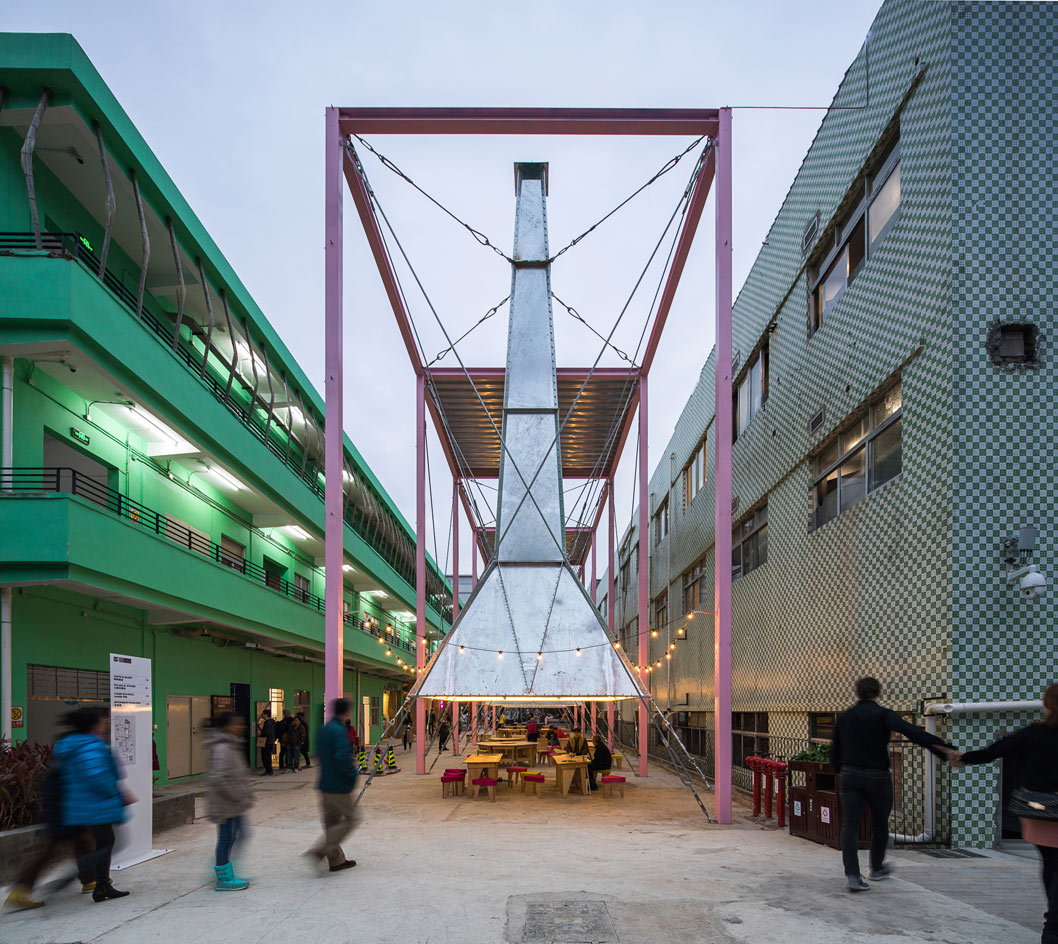
The Fire Foodies Club, an installation for the Bi-City Biennale of Urbanism\Architecture by Atelier Bow Wow.
A project by Tatzu Nishi reproduced a fragment of an asphalted road, complete with the guardrails, a car, a streetlight and a few household artefacts. The piece jutted out from the top floor of a former factory workers’ dorm, as a symbol of high-speed urbanisation cutting its way through the historic fabric of the city.
Displayed inside the disused factory buildings and in various outdoor locations across Nantou, animation and documentary films, architectural anti-utopias and urban science fiction, site-specific installations and artworks using found objects complement a wealth of research-based material from China and the rest of the globe, shown in UABB’s urban and architectural sections.
Intended as the world’s only biennale that focuses on urban design and urbanisation, UABB used art to comment on the notions of ‘street, home, public space, social production’ – the issues that concern everyone yet sound too abstract if described in professional, purely rational terms. Granted direct access to our imagination and emotions, art can prove a far more efficient communication device.
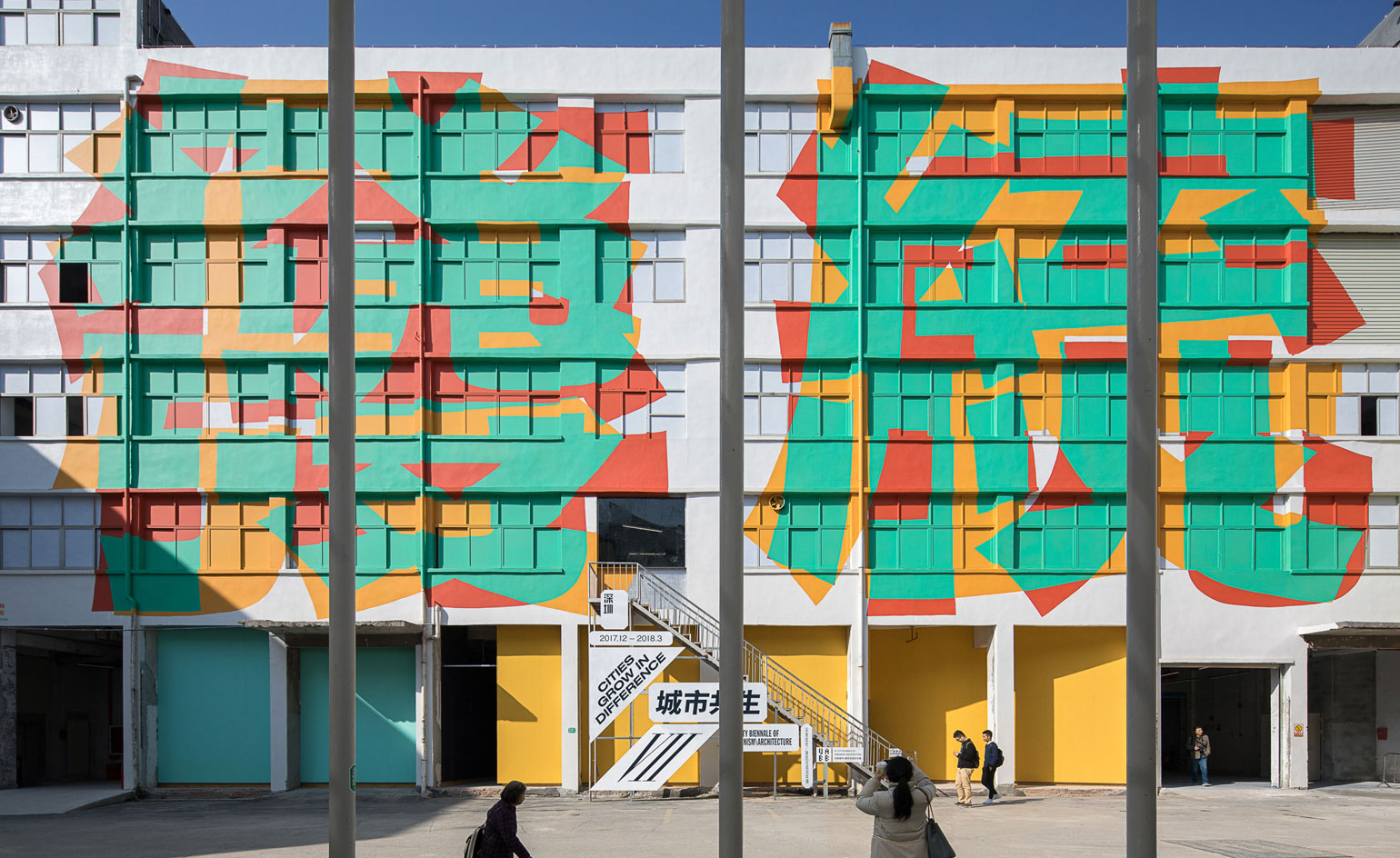
Pingheng, Understanding Chinese Reality is a colourful mural by collective Boa Mistura on the facade of the former factory hosting the UABB exhibition.

Two pavilions designed by Urbanus delimit the existing Baode square and form tiered seating for open-air events. During the biennale, they will house an info centre and a bookstore and will then serve the Nantou residents as a community hubs.
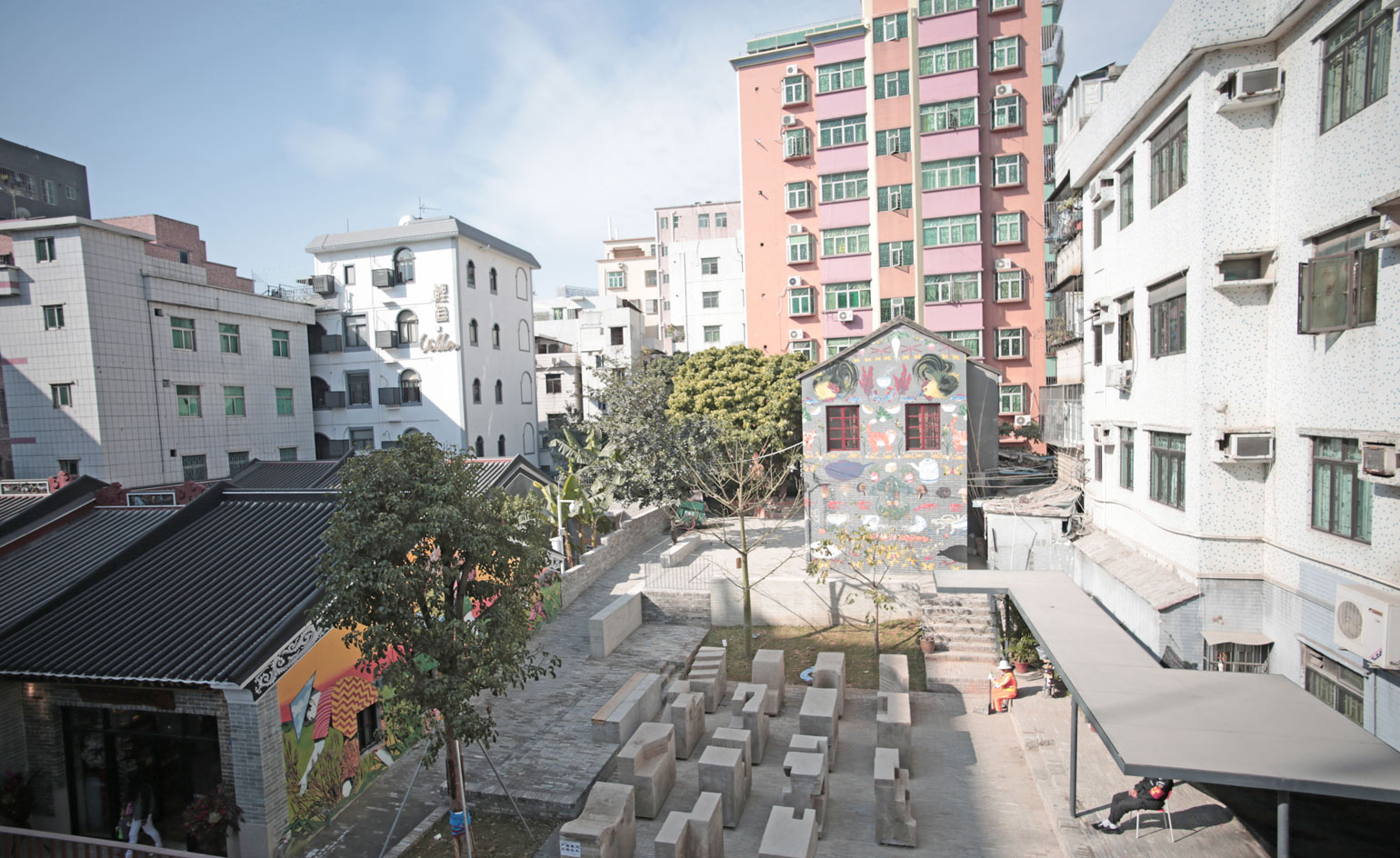
The main exhibition venue of Shenzhen is located in the Nantou Old Town and in addition had five sub-venues across the urban villages scattered across Shenzhen.

The Fire Foodies Club by Atelier Bow Wow was initially meant as a space where street cooking would be fuelled by reclaimed wood from the maintenance of Shenzhen’s green areas. However, the use of open fire was recently banned in the entire region due to high pollution levels, so finally the project became not only a gathering place and an outdoor extension of the cafe, but also a comment on the effects of industrialisation.
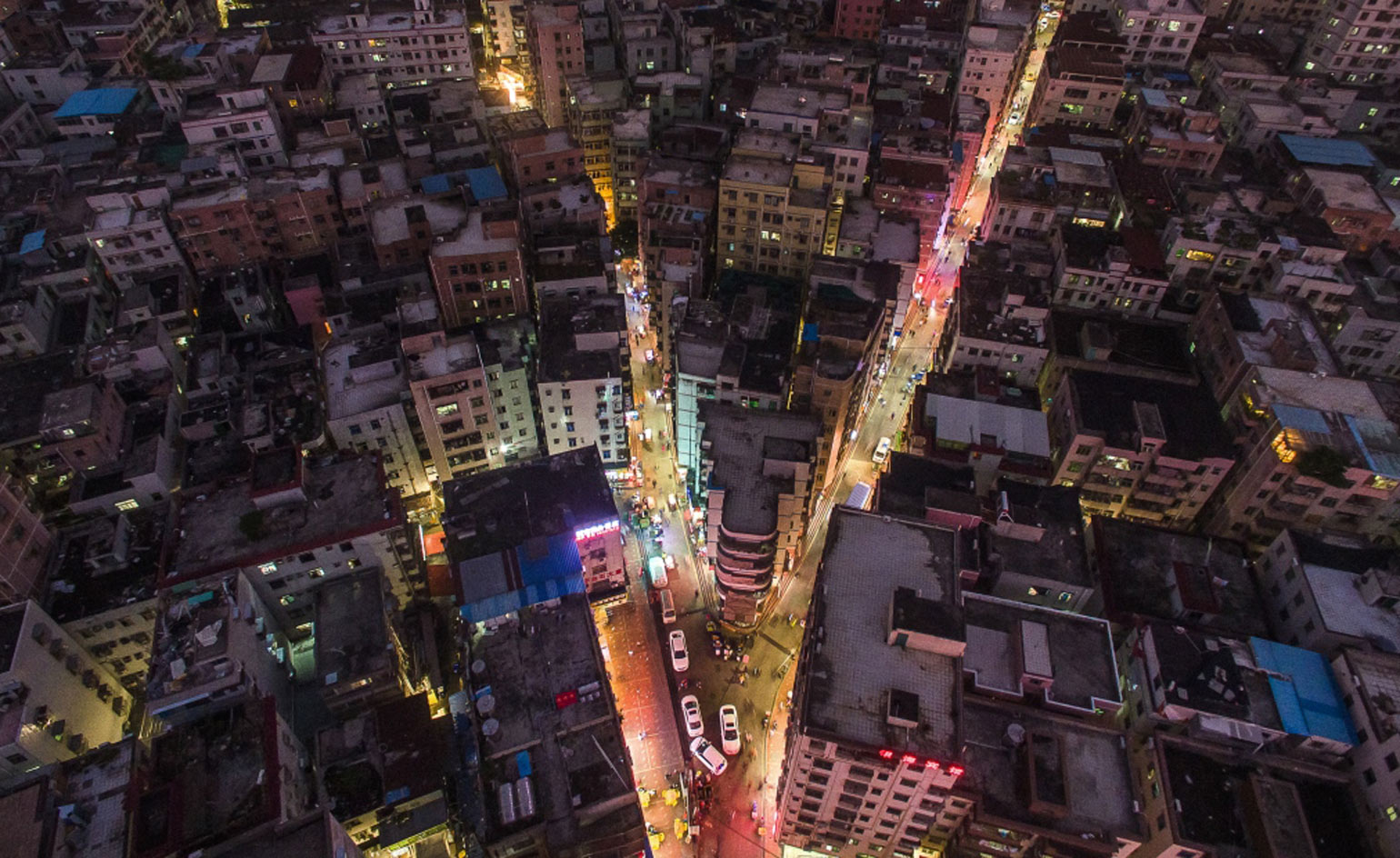
First Station: Baishizhou by architectural photographer Zhang Chao pays tribute to Shenzhen's another urban village where he spent his first three years after graduating as an architect.

1/2 Bowl, is installation by Shen Yuan. Shaped as a bowl, the sculpture holds buildings inside it referencing the urban structure of a city.
INFORMATION
For more information, visit the Bi-City Biennale of Urbanism/Architecture website
Receive our daily digest of inspiration, escapism and design stories from around the world direct to your inbox.
-
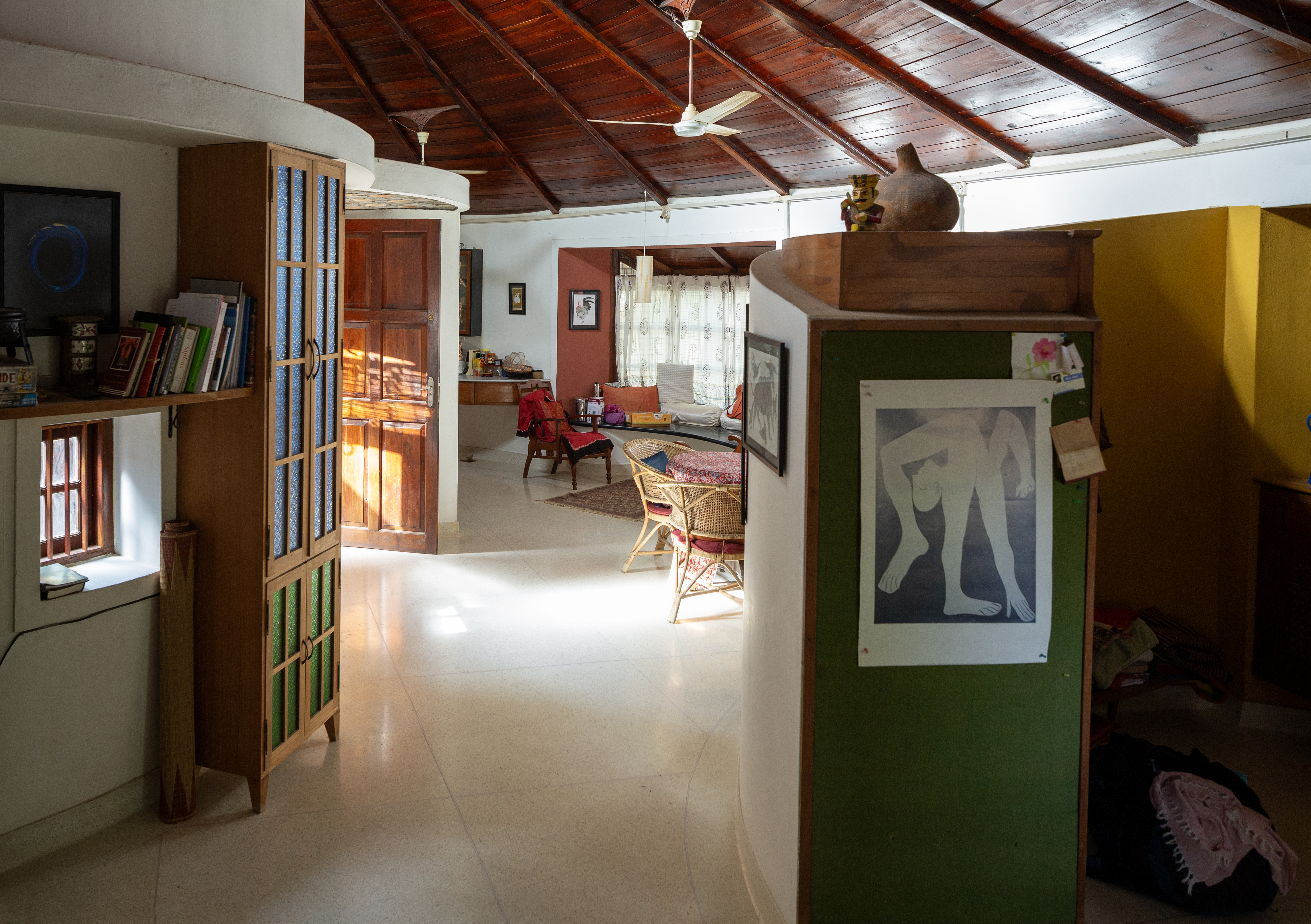 Inside a creative couple's magical, circular Indian home, 'like a fruit'
Inside a creative couple's magical, circular Indian home, 'like a fruit'We paid a visit to architect Sandeep Virmani and social activist Sushma Iyengar at their circular home in Bhuj, India; architect, writer and photographer Nipun Prabhakar tells the story
-
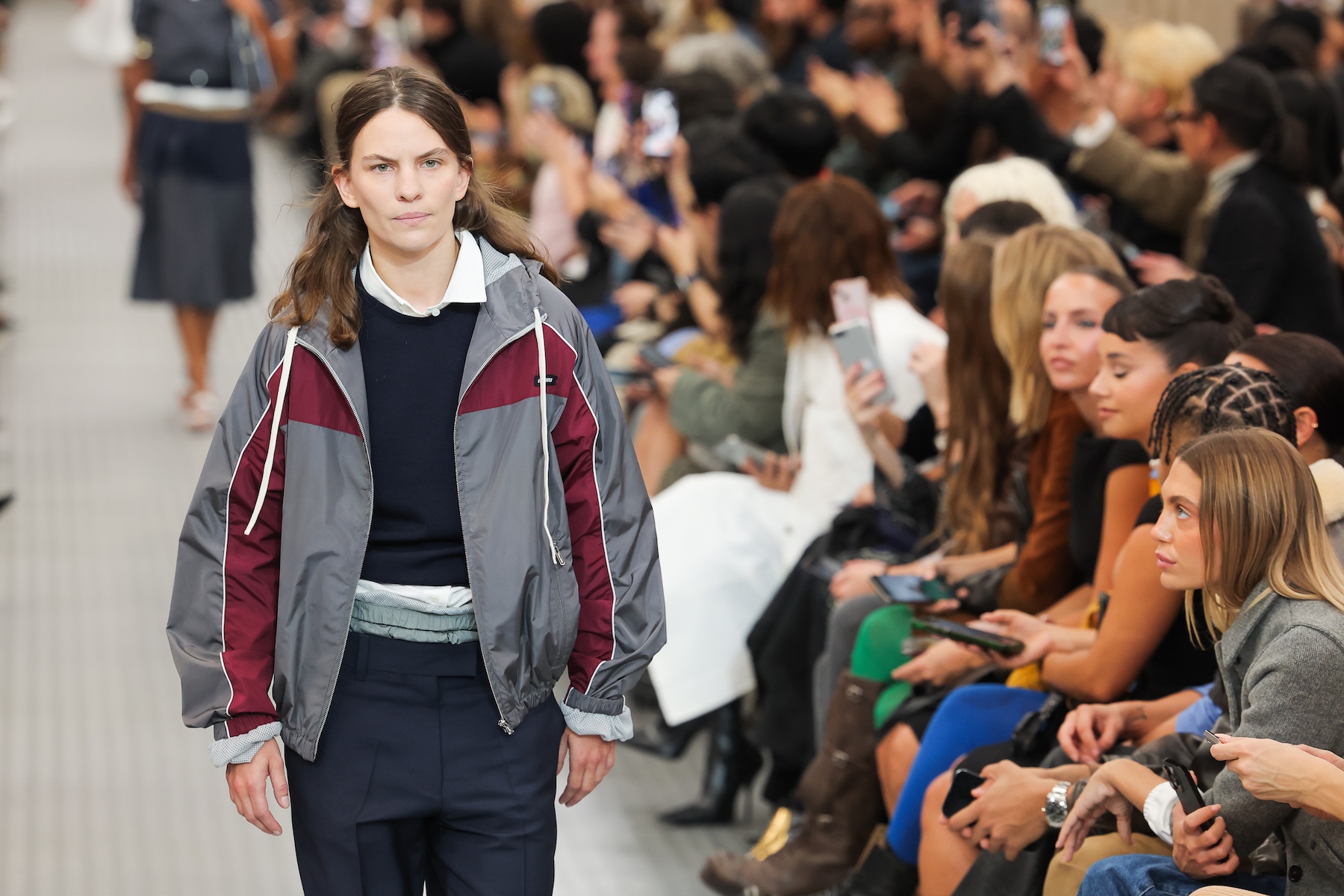 Ten of the best track jackets for channelling a 1970s-meets-1990s cool
Ten of the best track jackets for channelling a 1970s-meets-1990s coolAs a ‘Marty Supreme’ track jacket makes a bid for viral garment of 2025 – thanks to one Timothée Chalamet – the Wallpaper* style team selects ten of the best tracksuit and coach jackets for men and women, each encapsulating an easy, nostalgia-tinged elegance
-
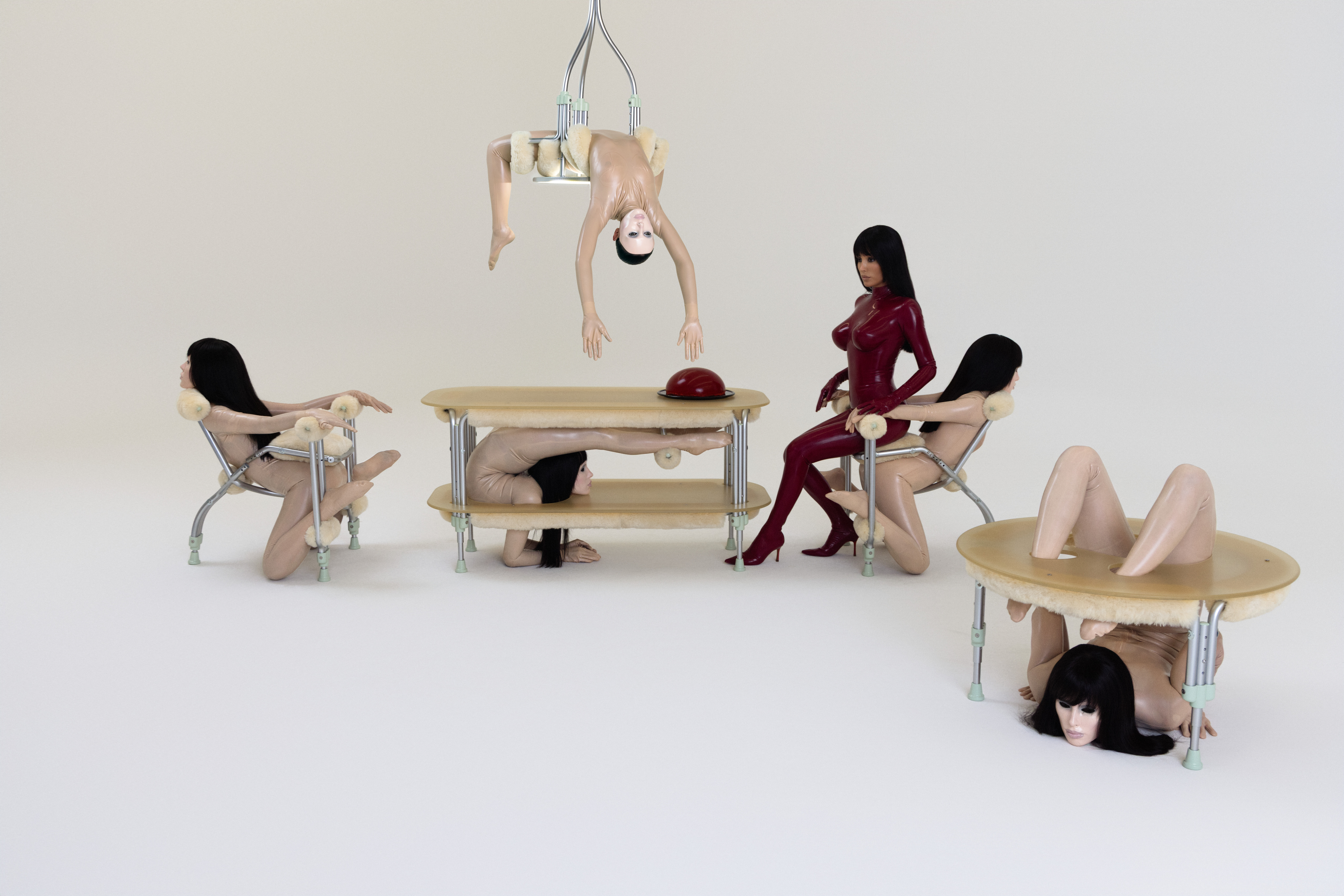 Eight questions for Bianca Censori, as she unveils her debut performance
Eight questions for Bianca Censori, as she unveils her debut performanceBianca Censori has presented her first exhibition and performance, BIO POP, in Seoul, South Korea
-
 Wang Shu and Lu Wenyu to curate the 2027 Venice Architecture Biennale
Wang Shu and Lu Wenyu to curate the 2027 Venice Architecture BiennaleChinese architects Wang Shu and Lu Wenyu have been revealed as the curators of the 2027 Venice Architecture Biennale
-
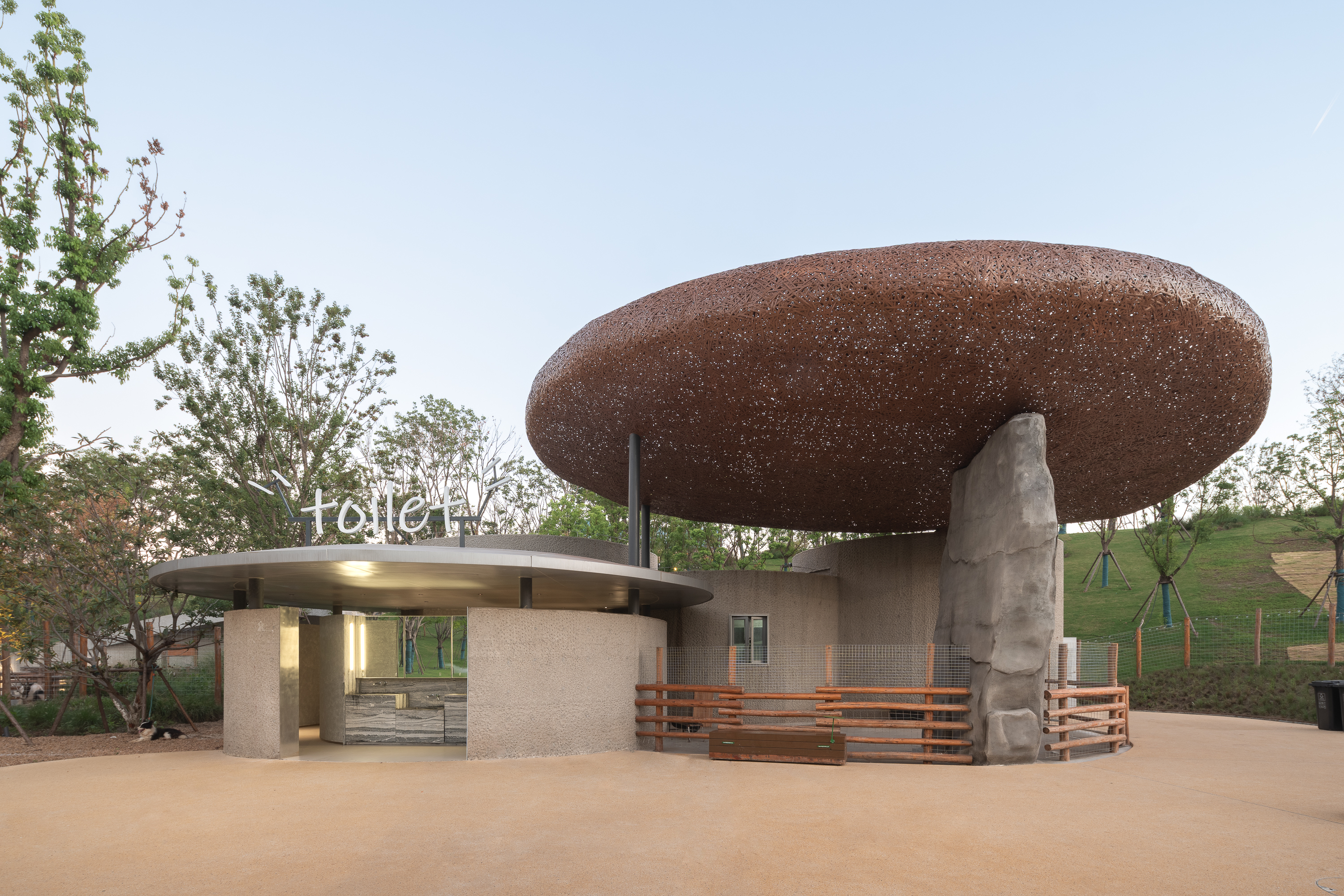 Tour this Chinese eco-farm, an imaginative wonderland connecting visitors with nature
Tour this Chinese eco-farm, an imaginative wonderland connecting visitors with natureLuxeIsland Farm by Various Associates is an eco-farm and visitor attraction in China’s picturesque Wuhan region; take a stroll across its fantastical landscape
-
 Honouring visionary landscape architect Kongjian Yu (1963-2025)
Honouring visionary landscape architect Kongjian Yu (1963-2025)Kongjian Yu, the renowned landscape architect and founder of Turenscape, has died; we honour the multi-award-winning creative’s life and work
-
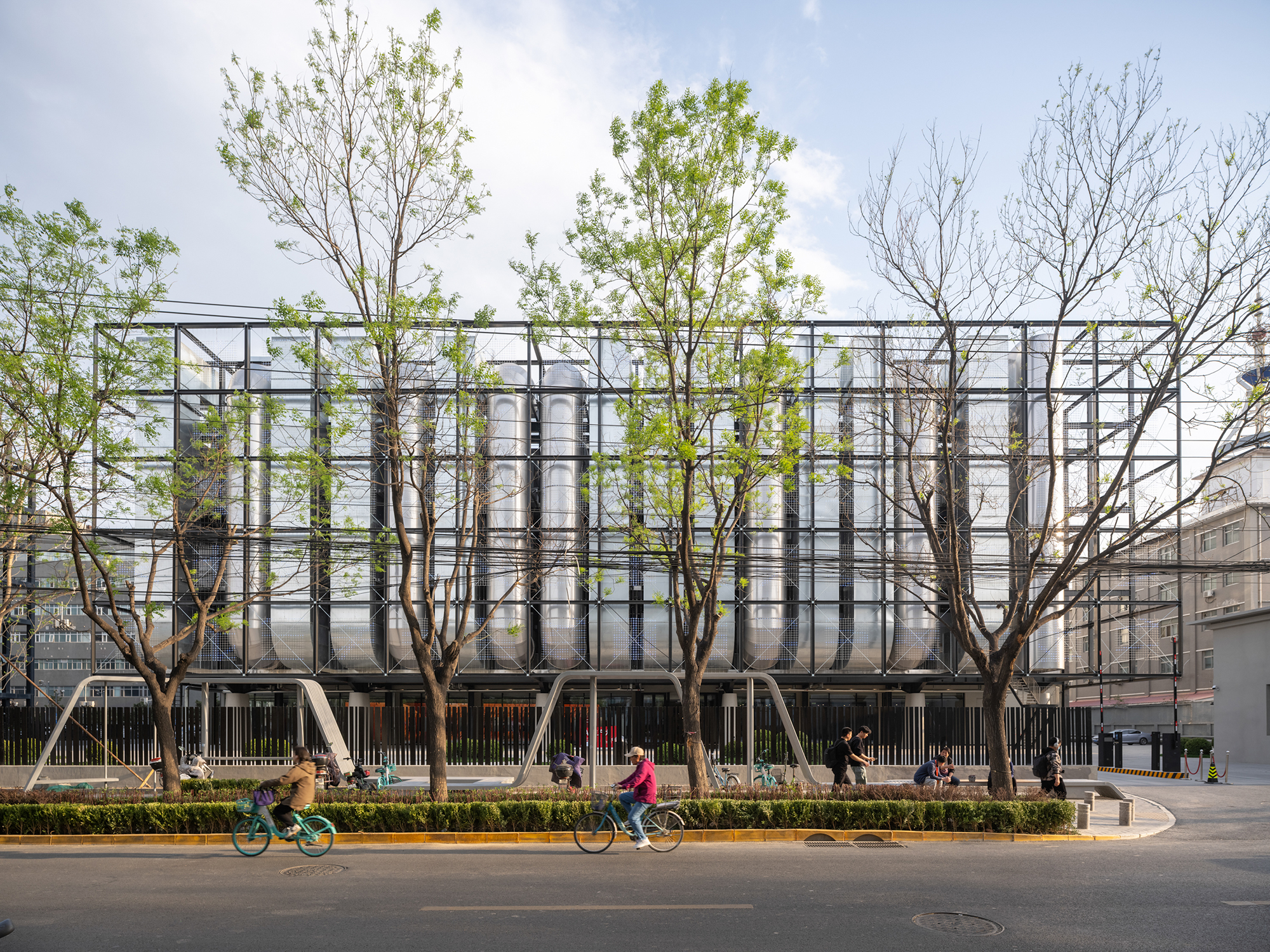 A new AI data centre in Beijing is designed to evolve and adapt, just like the technology within
A new AI data centre in Beijing is designed to evolve and adapt, just like the technology withinSpecialised data centre Spark 761, designed by llLab, is conceived as a physical space where humans and AI technology can coexist
-
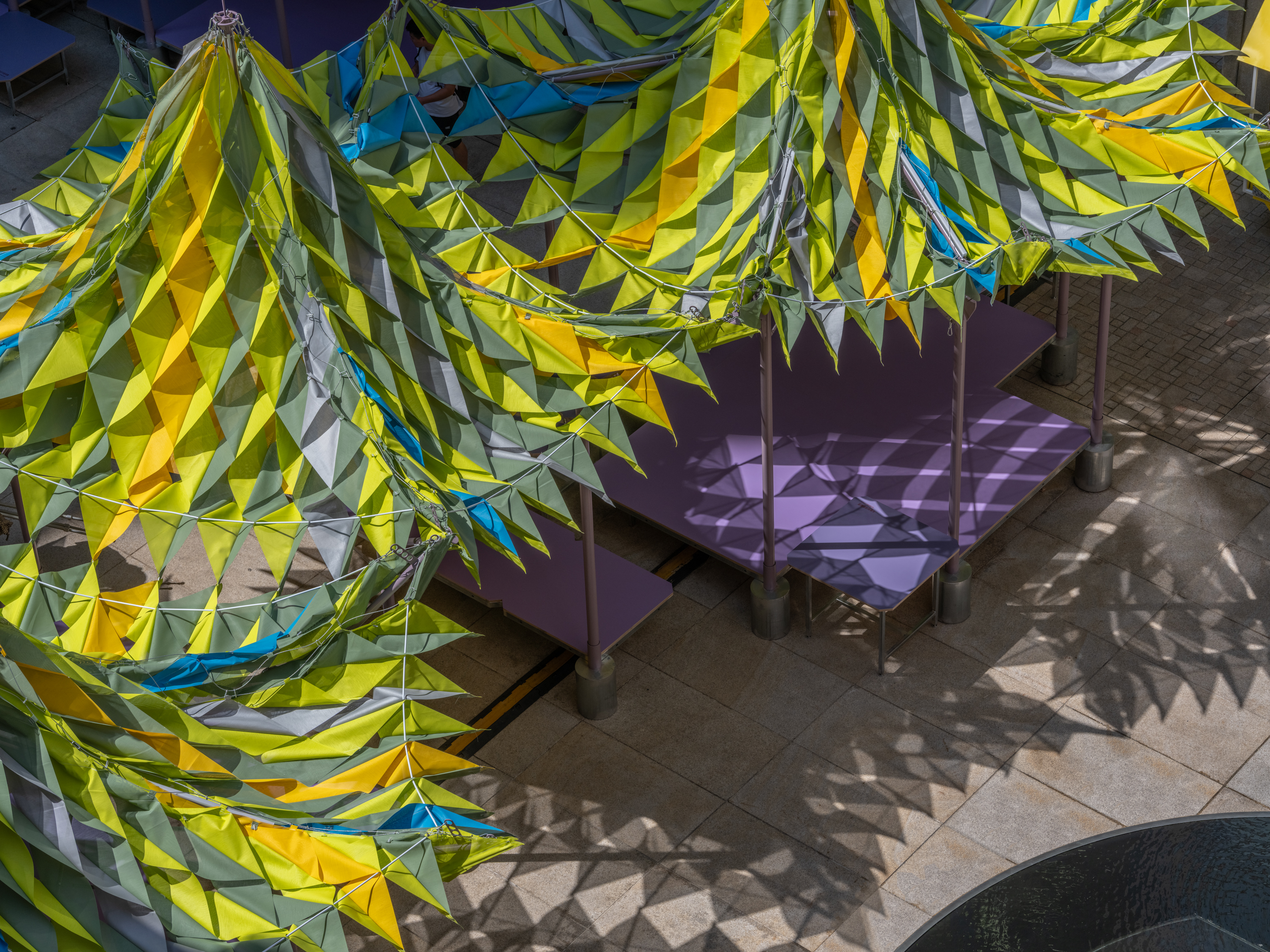 Shanghai’s biennial, RAMa 2025, takes architectural exploration outside
Shanghai’s biennial, RAMa 2025, takes architectural exploration outsideRAMa 2025, the architecture biennial at Rockbund Art Museum in Shanghai, launches, taking visitors on a journey through a historic city neighbourhood – and what it needs
-
 Atelier About Architecture’s ‘house within a house, and garden within a garden’
Atelier About Architecture’s ‘house within a house, and garden within a garden’House J in Beijing, by Atelier About Architecture, is an intricate remodelling complete with a hidden indoor garden and surprising sight lines
-
 A nature-inspired Chinese art centre cuts a crisp figure in a Guiyang park
A nature-inspired Chinese art centre cuts a crisp figure in a Guiyang parkA new Chinese art centre by Atelier Xi in the country's Guizhou Province is designed to bring together nature, art and community
-
 Zaha Hadid Architects’ spaceship-like Shenzhen Science and Technology Museum is now open
Zaha Hadid Architects’ spaceship-like Shenzhen Science and Technology Museum is now openLast week, ZHA announced the opening of its latest project: a museum in Shenzhen, China, dedicated to the power of technological advancements. It was only fitting, therefore, that the building design should embrace innovation